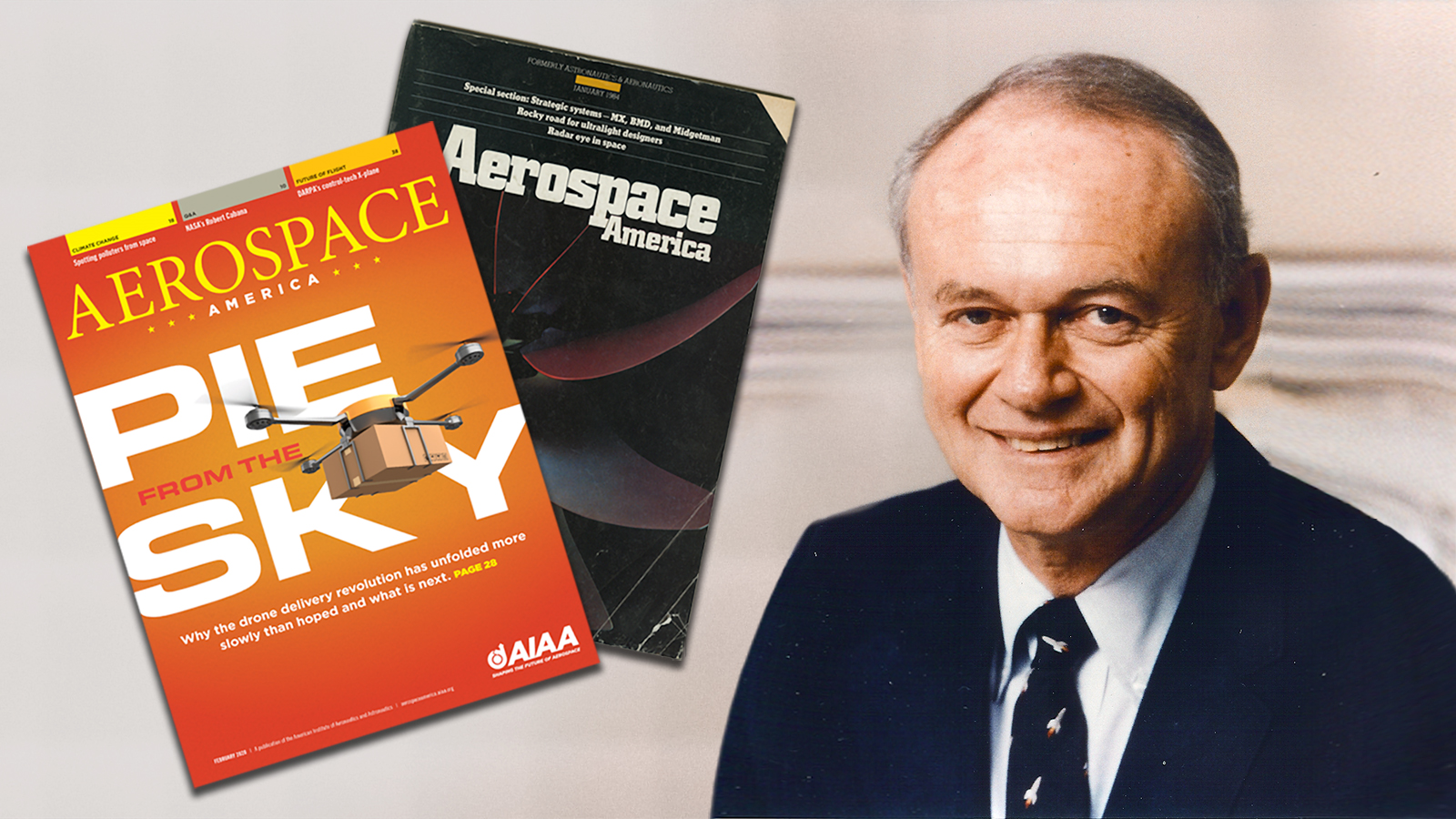Stay Up to Date
Submit your email address to receive the latest industry and Aerospace America news.
Aerospace America was Jerry Grey’s “baby,” but in learning more about his professional life following his death last month, I now understand that this magazine was just one of several long-lasting professional passions for him.
For us, Grey was our founding publisher and editor emeritus. He led the launch of Aerospace America in 1984 as the successor to AIAA’s Astronautics & Aeronautics magazine. When I joined the staff in 2013 as editor-in-chief, one of the first things I did was call Grey, who by then was retired and dividing his time between London and Florida.
His advice was to continue to capture the imaginations of not just specialists but also anyone fascinated by aerospace. Tone would be important, he said, but no relevant topic should be off-limits. Sometimes conventional thought had to be challenged. His profession deserved a magazine like that.
I hung up the phone ready to get to work.
This was classic Grey. “He emboldened me,” recalls Elaine Camhi, my predecessor as editor-in-chief, who counted Grey as her mentor.
When Camhi became the magazine’s top editor in 1991, she recalls running guest editorials in her first few issues. She did not have a science background, and she believed some thought it “iffy” to have a woman in charge. “Finally, Jerry said to me, ‘You know, you’re going to run out of friends soon.’” She asked Grey why anyone should care what she thinks. He said: “It’s not that they care what Elaine Camhi thinks. They care about what the editor-in-chief of this magazine thinks.”
Camhi began writing editorials.
“He gave me the courage to find — to tap into — my potential,” Camhi adds. “He probably did that with a lot of his students,” she says, referring to his decades as a professor at Princeton University in New Jersey.
One of those students was William Sirignano, now dean emeritus of the University of California, Irvine, who as a graduate student took a rocket propulsion course taught by Grey. “I always remember him as smiling, not frowning, even if he maybe wasn’t happy with what I did,” says Sirignano.
Grey was also renowned. When early versions of the engines for the Redstone and later Saturn launch vehicles exploded during testing, Grey was among those who researched the mystery. “As Tom Wolfe wrote, ‘our rockets always blew up,’” Grey noted in a 2005 email interview with historian Tom Crouch of the Smithsonian National Air and Space Museum.
Grey and other researchers in 1960 proposed one explanation for this combustion instability: The natural frequencies in the combustion chamber were amplified by the size and shape of the combustion chamber, as well the design of the injector plate that directed the fuel and oxidizer into the chamber. Grey and colleagues called it the sensitive time-lag theory.
They went on to test this concept in a series of static engine fires at the Princeton laboratories. “We blasted dozens of copper rocket nozzles across the cattle-grazing fields adjoining Princeton’s Forrestal Research Center,” Grey told Crouch. This and other research led to changes in the F-1 engine in the mid-1960s, including enlarging the diameter of the fuel injector holes, Sirignano says.
By the 1990s, Grey had reached the status of elder statesman. In 1993, he shared his views on humanity’s future in a New York Times profile, “Encounters: Where the Bay Meets the Sea, Thoughts of a Life in Space.”
“Eventually I would like to think of the earth as a park-like place we could come back to visit from time to time,” Grey said. “There will come a time when we will have no choice but to expand beyond the planet, if the human race is to survive.”
Humanity “cannot stay still,” he said.
Staff reporter Cat Hofacker and associate editor Karen Small contributed to this report.
About Ben Iannotta
As editor-in-chief from 2013 to March 2025, Ben kept the magazine and its news coverage on the cutting edge of journalism. He began working for the magazine in the 1990s as a freelance contributor. He was editor of C4ISR Journal and has written for Air & Space Smithsonian, New Scientist, Popular Mechanics, Reuters and Space News.
Stay Up to Date
Submit your email address to receive the latest industry and Aerospace America news.




